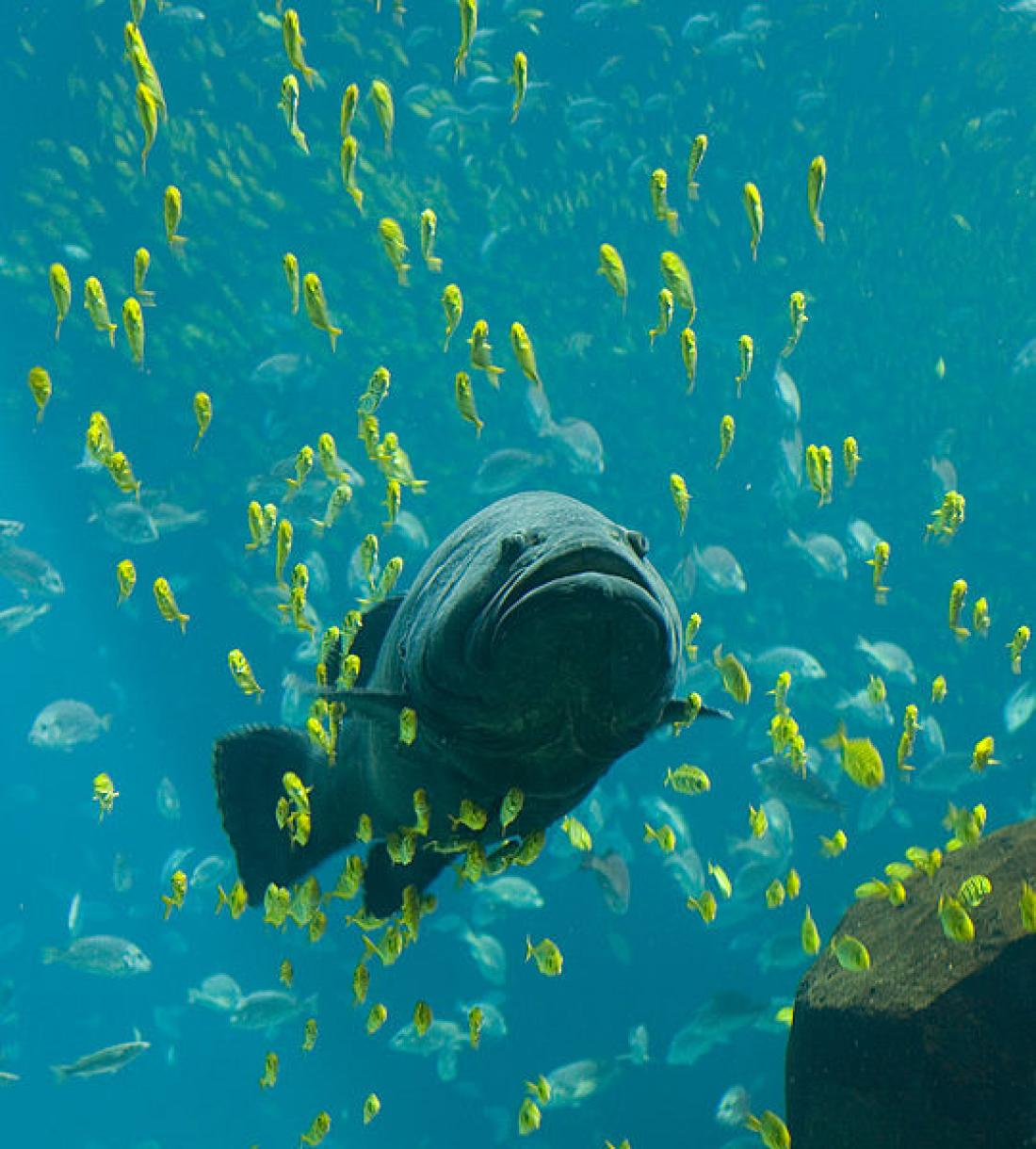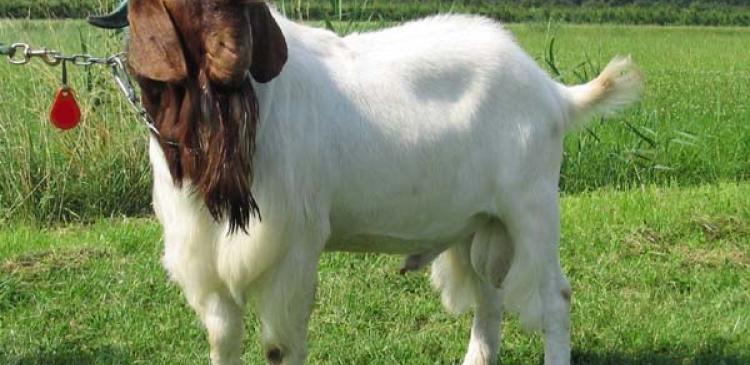Giant grouper (Epinephelus lanceolatus)
Grouping groupers
---------------------
Biomarkers that could help identify three vulnerable species of grouper are identified in the 2011 August issue of JTAS. They could be used to identify the species in transit and contribute to a strategy for the conservation and management of Malaysian fisheries resources.
The giant grouper (Epinephelus lanceolatus), Mouse Grouper (Cromileptes altivelis) and the Brown Marbled Grouper (Epinephelus fuscoguttatus) are all found in the coastal waters of Sabah, Malaysia; they are listed as vulnerable, threatened and near-threatened, respectively according to the International Union for Conservation of Nature and Natural Resources. Kenneth Rodrigues and colleagues at the Universiti Malaysia Sabah collected small clips from the fins of five of each species from a marine hatchery. Amplifying the DNA yielded distinct sequences for each of the species. Specific primer pairs were designed for each of the sequences and were determined to be species specific for each of the three species on which they were tested. These markers can be used for multiplex fingerprinting of the three grouper species, particularly for monitoring fisheries stocks and in the aquaculture industry.
Boer Goat Semen Cryopreservation
----------------------------------------
Also in the August issue, three experiments were carried out to improve semen quality during cryopreservation process. Semen cryopreservation is essential for the application of reproductive techniques such as AI and IVF which contribute to increase production of goat and genetic selection schemes. Firstly the effects of seminal plasma removal were analyzed. The removal of seminal plasma gave better results in motility after cryopreservation. In Experiment 2, three different washing solutions were tested and one was found to achieve better results than the other two. Finally the effects of different centrifugation regimes were evaluated. The team conclude that the removal of seminal plasma, the washing solution TCG and the use of short-term centrifugation with a relatively high g-force could contribute to the increased Boer semen quality after cryopreservation.
Carcass Compositions of different breeds of chicken
----------------------------------------------------------
This study was undertaken with the aim to determine the carcass composition of three breeds of chicken and their correlation with growth performance. Fifty Red Jungle Fowl (Gallus gallus Spadiceus), fifty Malaysian indigenous chickens (Gallus gallus Domesticus) and fifty broiler chickens (ROSS) were used. They were sacrificed at 1, 10, 20, 56 and 120 days post-hatching. There were significant differences in the parameters measured between the high performance commercial broilers, and the two other lower performance breeds although they were reared under the same environment and received the same feed, management and other facilities. Meanwhile, relative whole carcass weight, bone and fat weights in the commercial broiler were the highest compared to indigenous chickens and red jungle fowl.
For more information about each research, please contact:
Grouping groupers
K. F. Rodrigues
Biotechnology Research Institute,
Universiti Malaysia Sabah,
Locked Bag 2073,
88999 Kota Kinabalu,
Sabah, Malaysia
Email: [email protected]
Boer Goat Semen Cryopreservation
Abd Wahid Haron
Department of Veterinary Clinical Studies,
Faculty of Veterinary Medicine,
Universiti Putra Malaysia, 43400 UPM, Serdang,
Selangor Darul Ehsan, Malaysia
Email: [email protected]
T: +(603) 8946 3941.
M: +(6) 013 360 2245
Carcass Compositions of different breeds of chicken
A. B. Z. Zuki
Department of Veterinary Preclinical,
Sciences Faculty of Veterinary Medicine,
Universiti Putra Malaysia,
43400 Serdang, Malaysia
Email: [email protected]
T: +(603) 8947 2102.
M: +(6) 019 604 6659
About Pertanika Journal of Tropical Agricultural Science (JTAS)
Pertanika Journal of Tropical Agricultural Science (JTAS) is published by Universiti Putra Malaysia in English and is open to authors around the world regardless of nationality. Beginning 2012, it would be published four times a year in February, May, August and November. Other Pertanika series include Pertanika Journal of Science & Technology (JST), and Pertanika Journal of Social Sciences & Humanities (JSSH).
JTAS aims to provide a forum for high quality research related to tropical agricultural research. Areas relevant to the scope of the journal include: agricultural biotechnology, biochemistry, biology, ecology, fisheries, forestry, food sciences, entomology, genetics, microbiology, pathology and management, physiology, plant and animal sciences, production of plants and animals of economic importance, and veterinary medicine. The journal publishes original academic articles dealing with research on issues of worldwide relevance.
Website: http://www.pertanika.upm.edu.my/
For more information about the journal, contact
The Executive Editor (Pertanika Journals)
Head, Journal Division, UPM Press
Office of the Deputy Vice Chancellor (R&I)
Tower 2, UPM-MDTC Technology Centre
Universiti Putra Malaysia
43400 Serdang, Selangor
Malaysia.
Phone: +(603) 8947 1622 | +(6) 016 217 4050
Email: [email protected]
Acknowledgements
The Executive Editor, Pertanika journals




